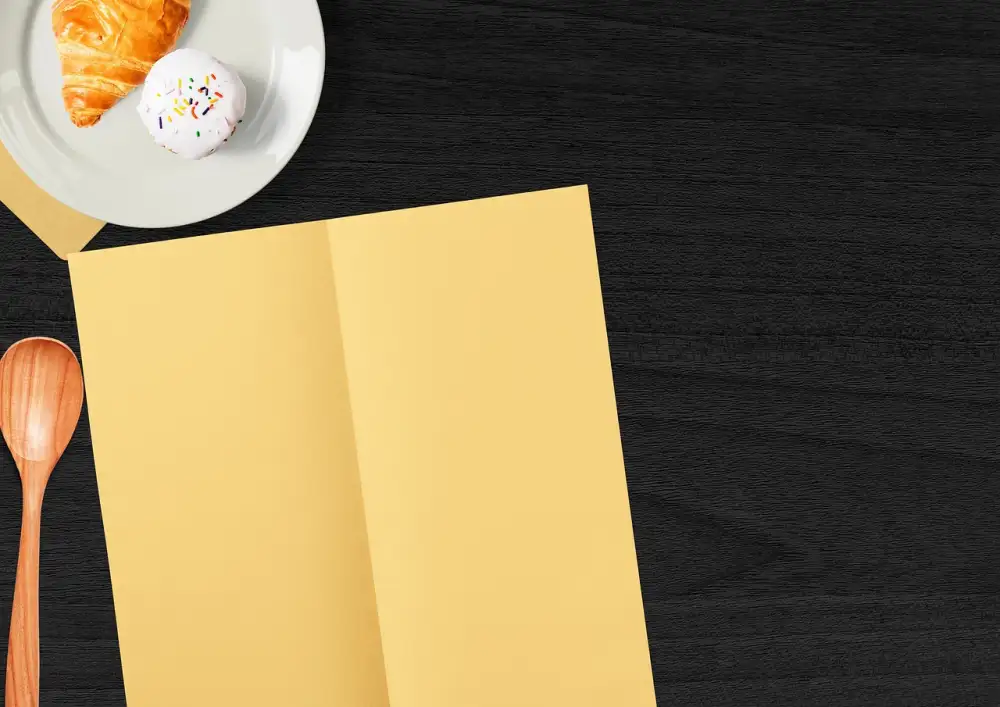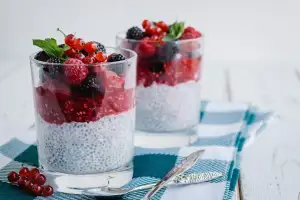Master the Art of Making Puff Pastry: A Delectable Recipe Guide

Puff pastry, also known as pâte feuilletée, is a versatile and flaky dough that has been delighting taste buds for centuries. Its origins can be traced back to ancient Egypt, where it was first created by combining layers of butter and dough. Over time, this technique spread throughout Europe and became a staple in French cuisine.
What sets puff pastry apart is its unique ability to rise dramatically when baked, creating light and airy layers that are perfect for both sweet and savory dishes. The secret lies in the process of laminating the dough, which involves folding and rolling multiple times to create hundreds of thin layers of butter trapped between layers of dough.
The result is a pastry that is crisp on the outside, yet tender and buttery on the inside. It provides a delicate texture that adds depth and complexity to any dish it is used in. Whether it's a classic croissant or an elegant vol-au-vent, puff pastry elevates ordinary ingredients into extraordinary culinary creations.
In the following sections, we will explore the importance of puff pastry in culinary creations, the essential ingredients required for making it from scratch, step-by-step instructions for mastering the art of making puff pastry at home, tips and tricks for achieving perfect results every time, creative ways to use puff pastry in recipes, and finally conclude with our thoughts on this delectable dough. So let's dive in and discover the wonders of puff pastry!
Importance of Puff Pastry in Culinary Creations
Puff pastry is a crucial element in the world of culinary creations. Its importance lies in its ability to transform simple ingredients into exquisite and visually stunning dishes. The light, flaky layers of puff pastry add a delicate texture and buttery flavor that elevates any dish to new heights.
One of the key reasons why puff pastry is highly valued in the culinary world is its versatility. It can be used to create both sweet and savory dishes, making it a staple in both dessert and main course recipes. From classic pastries like croissants and palmiers to elegant appetizers such as vol-au-vents and tartlets, puff pastry provides endless possibilities for creative culinary exploration.
The unique characteristic of puff pastry lies in its ability to rise dramatically when baked, creating those signature airy layers. This transformation occurs due to the high butter content in the dough. As the pastry bakes, the water in the butter turns into steam, causing the layers of dough to separate and expand. The result is a beautifully puffed pastry with a crisp exterior and a tender interior.
Furthermore, puff pastry adds an element of sophistication to any dish. Its delicate appearance and impressive height make it an ideal choice for special occasions or when you want to impress your guests with your culinary skills. Whether used as a base for tarts or as a topping for pot pies, puff pastry instantly enhances the overall presentation of a dish.
In summary, puff pastry plays an essential role in culinary creations due to its versatility, unique rising properties, and ability to elevate dishes both visually and flavor-wise. Mastering the art of making puff pastry opens up endless opportunities for innovative recipes that are sure to wow your taste buds and leave lasting impressions on anyone who tries them.
Ingredients Required for Making Puff Pastry
To make the perfect puff pastry, you will need a few key ingredients. The first and most important is all-purpose flour, which provides the structure and texture of the pastry. You will also need cold unsalted butter, which creates those flaky layers when it melts during baking. To add flavor and richness, use salt and ice-cold water. These simple ingredients are all you need to create a delicious and versatile puff pastry that can be used in a variety of recipes.
Step-by-Step Instructions for Making Puff Pastry
1. Start by combining 2 ½ cups of all-purpose flour and 1 teaspoon of salt in a large mixing bowl. Mix well.
2. Cut 1 cup (2 sticks) of cold unsalted butter into small cubes. Add the butter to the flour mixture and use your fingertips to rub it in until the mixture resembles coarse crumbs.
3. Make a well in the center of the mixture and pour in ¾ cup of ice-cold water. Gently mix with a fork until the dough starts to come together.
4. Transfer the dough onto a lightly floured surface and knead it gently for about 5 minutes until it becomes smooth and elastic.
5. Shape the dough into a rectangle and wrap it tightly with plastic wrap. Refrigerate for at least 30 minutes to allow the gluten to relax.
6. Remove the dough from the refrigerator and place it on a lightly floured surface. Roll it out into a rectangle about ¼ inch thick.
7. Fold one-third of the dough over itself, then fold the other third over that, like folding a letter.
8. Rotate the dough 90 degrees, then roll it out again into a rectangle about ¼ inch thick.
9. Repeat steps 7 and 8 two more times, chilling the dough for at least 30 minutes between each fold.
10. After completing all folds, wrap the puff pastry tightly in plastic wrap and refrigerate for at least an hour or overnight before using.
Follow these step-by-step instructions carefully, and you'll be able to master the art of making puff pastry with ease!
Tips and Tricks for Perfect Puff Pastry
1. Keep ingredients cold: It's crucial to work with chilled butter and ice-cold water when making puff pastry. This helps create those beautiful layers of flakiness.
2. Don't overwork the dough: Be gentle when mixing the ingredients together. Overworking the dough can result in a tough pastry instead of a light and airy one.
3. Use a light touch when rolling: When rolling out the dough, use minimal pressure to prevent squishing the layers. Roll in one direction, turning the dough occasionally to ensure even thickness.
4. Chill between folds: After each fold, refrigerate the dough for at least 30 minutes to allow it to rest and firm up. This helps maintain the structure and prevents excessive gluten development.
5. Use flour sparingly: While rolling out the dough, use as little flour as possible to prevent it from becoming too dry or tough.
6. Create even layers: Aim for consistent layer thickness by ensuring that each fold is done neatly and evenly.
7. Proper sealing: When folding or sealing edges, make sure they are well pressed together to prevent any filling from leaking during baking.
8. Bake at high temperature: Puff pastry loves hot ovens! Preheat your oven to a high temperature (around 200°C/400°F) before placing your pastries inside for baking. This helps achieve maximum puffiness.
9. Avoid overcrowding: Leave enough space between pastries on the baking sheet to allow proper airflow and expansion while baking.
10. Brush with egg wash: For an attractive golden color, brush your puff pastry with an egg wash (a mixture of beaten egg and water) before baking.
By following these tips and tricks, you'll be able to master the art of making perfect puff pastry every time!
Creative Ways to Use Puff Pastry in Recipes
Puff pastry is an incredibly versatile ingredient that can be used in a variety of creative ways to elevate your culinary creations. Here are some innovative ideas to inspire you:
1. Sweet and Savory Tartlets: Use puff pastry as a base for both sweet and savory tartlets. Fill them with a combination of ingredients like caramelized onions and goat cheese, or fresh berries and whipped cream.
2. Vol-au-Vents: Create elegant bite-sized appetizers by cutting puff pastry into small circles or squares, then filling them with delicious combinations like creamy mushroom and thyme, or smoked salmon and dill.
3. Puff Pastry Pizza: Forget the traditional pizza dough and try using puff pastry as the base for your next pizza creation. Top it with your favorite ingredients like tomato sauce, cheese, veggies, and meats for a unique twist on a classic dish.
4. Puff Pastry Pinwheels: Roll out puff pastry into a rectangle, spread it with pesto or tomato sauce, sprinkle with cheese, and roll it up tightly. Slice into pinwheels and bake until golden brown for a delightful appetizer or snack.
5. Puff Pastry Straws: Cut puff pastry into thin strips, twist them gently, brush with egg wash, sprinkle with herbs or spices, and bake until crispy. These make perfect accompaniments to soups or dips.
6. Puff Pastry Turnovers: Fill squares of puff pastry with sweet or savory fillings such as apple cinnamon or spinach feta mixture. Fold over diagonally to create turnovers and bake until golden brown.
7. Puff Pastry Napoleons: Layer baked puff pastry sheets with whipped cream or custard and fresh fruits for an elegant dessert that will impress your guests.
With its light and flaky texture, puff pastry adds a touch of sophistication to any dish. So, don't be afraid to get creative and experiment with different flavors and combinations. The possibilities are endless when it comes to using puff pastry in your recipes.
In conclusion, mastering the art of making puff pastry can open up a world of culinary possibilities. Its light and flaky texture, combined with its versatility, makes it an essential ingredient in creating delectable dishes. Whether you use it as a base for savory tarts or sweet pastries, puff pastry adds a touch of elegance to any recipe.
While making puff pastry may seem daunting at first, with practice and patience, anyone can achieve excellent results. Remember to keep your ingredients cold and handle the dough gently to ensure optimal rise and flakiness. Don't be afraid to get creative with fillings and shapes to make your puff pastry creations truly unique.
So why not embark on a culinary adventure and try your hand at making homemade puff pastry? The satisfaction of biting into a perfectly golden and buttery treat will be well worth the effort. With this guide as your companion, you'll soon become a master of the art of puff pastry, impressing friends and family with your delicious creations. Happy baking!
Published: 22. 11. 2023
Category: Food



